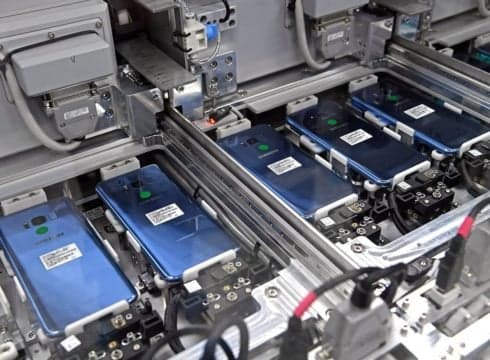The government is reportedly looking to allocate up to INR 40,000 Cr for the proposed electronics component manufacturing scheme
It further anticipates that successful applicants will invest approximately INR 82,000 Cr in total
The total value of components produced by these companies could range between INR 1.95 Lakh Cr and INR 2 Lakh Cr over the course of the scheme
Inc42 Daily Brief
Stay Ahead With Daily News & Analysis on India’s Tech & Startup Economy
The government is reportedly looking to allocate up to INR 40,000 Cr for the proposed electronics component manufacturing scheme, which is expected to be rolled out later this year.
According to an ET report, the government anticipates that successful applicants will invest approximately INR 82,000 Cr in total. The total value of components produced by these companies could range between INR 1.95 Lakh Cr and INR 2 Lakh Cr over the course of the scheme.
Of the INR 40,000 Cr allocated for the scheme, approximately INR 19,800 Cr is expected to be designated for operational expenditure subsidies, while roughly INR 13,000 Cr will be allocated for capital expenditure subsidies, an anonymous official was quoted as saying by the same publication.
“The rest nearly INR 12,000 Cr could be allocated as a mix of capex and opex subsidies. The finer details of how these will be allocated will be finalised later,” the official added.
Earlier, the government informed Parliament that as of June 30, INR 8,803.14 Cr was invested under the Scheme for Promotion of Manufacturing of Electronic Components and Semiconductors.
As per ET, the Ministry of Electronics and Information Technology (MeitY) may adopt a three-pronged approach for the plan’s incentives, offering them as either a capex subsidy, an opex subsidy, or a combination of both. Companies producing non-solder masked passive components, flex PCBA, and sub-assembly display and camera modules are likely to receive only operational expenditure subsidies, while those making lithium-ion cells for electronics may qualify solely for capital expenditure subsidies.
Companies that make printed circuit boards (PCBs) with equal to or more than eight layers may qualify for obtaining both operational and capital expenditure subsidies, the report added.
“Unlike PLI schemes, the idea here is to encourage the companies to source as much as possible domestically. In some of the components such as non-solder masked passive components, we are confident of achieving up to 65% domestic value addition,” another official said.
Meanwhile, the Production Linked Incentive (PLI) scheme for large-scale electronics, which offers 3% to 6% incentives on incremental sales of electronics produced in India over five years, had seen an investment of INR 8,390 Cr as of June 30. The scheme has supported the production of INR 5,14,960 Cr to date. Launched on April 1, 2020, the PLI scheme aims to boost domestic manufacturing and attract investment in the mobile phone value chain, including electronic components and semiconductor packaging.
{{#name}}{{name}}{{/name}}{{^name}}-{{/name}}
{{#description}}{{description}}...{{/description}}{{^description}}-{{/description}}
Note: We at Inc42 take our ethics very seriously. More information about it can be found here.


